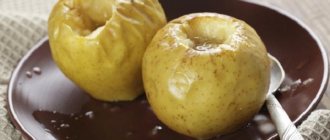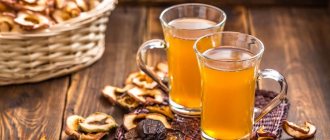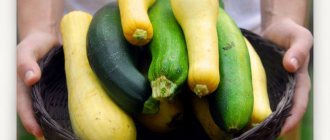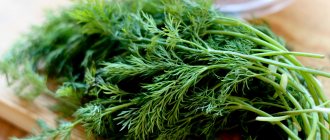During pregnancy, a woman should be especially attentive to her health, monitor what foods she consumes, and maintain the vitamin balance in her body.
Often, to cope with stressful situations, expectant mothers resort to traditional medicine, believing that they have no contraindications.
Hawthorn is considered a common remedy to relieve nervous tension and irritation.
How many calories are in hawthorn, composition and nutritional value
The medicinal properties of hawthorn have been known for a long time. In ancient times, everything was used: bark, leaves, flowers of the plant. By decree of Peter I, hawthorn took a dignified place in apothecary gardens.
Later, scientists studied the composition of the plant and determined what benefits hawthorn can bring for women (useful properties and contraindications). Flowers, bark and leaves continue to be studied today. As for the chemical composition of berries, it has been studied quite well.
Composition of hawthorn fruits
The fruits are covered with a thick skin, under which a pleasant-tasting pulp is hidden. Inside there is one or more triangular bones.
The size and shape of the berries depend on the variety, and the chemical composition depends on the growing conditions. The brighter the fruits, the more benefits they provide and the richer the composition of the hawthorn.
The berries contain organic acids - malic, ascorbic, tartaric, citric. They contain:
- flavonoids;
- glycosides;
- saponins;
- tannins;
- essential oils.
There is a full set of vitamins. Sugars are represented mainly by fructose. Minerals are present in small concentrations. Most of all in hawthorn:
- potassium;
- magnesium;
- calcium;
- gland.
Hawthorn calorie content
Red berries are classified as dietary products. But to organize dietary nutrition, you need to know how many calories are in hawthorn. As a rule, the nutritional value of 100 g of fruit is about 59 kcal.
The figure may change. There are sweeter berries of garden varieties, and there are also completely bland ones. Accordingly, their calorie content is different.
Divine and magical hawthorn: medicinal properties and contraindications
Hawthorn #8212; a berry known since ancient times for its healing properties.
Composition and medicinal properties of hawthorn. Contraindications. Recipes for hawthorn preparations. Reviews.
Composition and vitamins: what are the benefits of hawthorn?
The medicinal properties of the fruits, leaves and flowers of the bush are due to their rich chemical composition. Flavonoids have antioxidant properties, protecting cells from free radical damage. Quercetin is considered one of the strongest.
In addition to this, the fruits contain:
- hyperoside #8212; helps cells absorb glucose, oxygen and potassium ions;
- Vitexin #8212; improves the metabolism of heart muscle cells;
- quercitrin #8212; strengthens the walls of small vessels, making them more elastic.
Organic acids - oleanolic , caffeic and chlorogenic - contribute to:
- healing wounds and reducing inflammation;
- improving blood supply to the brain and strengthening the heart muscle;
- reducing the level of bad cholesterol and reducing the risk of developing atherosclerosis;
- formation of bile.
carotene content , hawthorn can be compared to carrots. In addition to it, the fruits contain vitamins C, E and K and trace elements - potassium, magnesium, zinc, copper and iron . Sorbitol contained in the plant is used as a sugar substitute by diabetics.
The benefits and harms of hawthorn for the body
It is used in the treatment of:
- hyperfunction of the thyroid gland;
- high blood pressure;
- rapid heartbeat, myocardial infarction, angina pectoris;
- epilepsy;
- headaches;
- atherosclerosis;
- neuralgia.
Dermatologists use hawthorn to treat herpes, dermatoses and allergic reactions. In therapeutic practice, it is prescribed as a choleretic, decongestant, and immune-stimulating agent.
Hawthorn during pregnancy #8212; is it possible to take it?
You can only drink weak tea made from dried fruits and only on the recommendation of your doctor. This light decoction will help you calm down and normalize sleep.
Can children be given hawthorn fruits?
In older age, it will help relieve increased excitability, normalize cardiac activity and calm the nervous system. This is especially true for teenagers. They are recommended to drink decoction or tea from hawthorn fruits, but in moderation.
Video: benefits of hawthorn, recipes
In spring and autumn, decoctions and compotes made from it will serve as a good vitamin supplement for the child’s body.
Hawthorn contraindications and precautions
Everything is good in moderation, and hawthorn treatment too. Its frequent and long-term use is not recommended. Absolute contraindications:
- allergy to any of its parts (leaves, fruits, flowers);
- hypotension;
- gastritis and ulcers.
What can be prepared from hawthorn for the winter? #8212; Recipes for preparing fresh berries at home
Hawthorn is taken not only in the form of decoctions and infusions. You can make a very tasty medicine and just a delicacy from it.
One of the first is hawthorn honey . It is very good for elderly people to use to restore strength, normalize blood pressure and cardiac activity. It is useful for those whose work involves increased physical activity.
Recipes for preparing fresh hawthorn berries for the winter at home. Since fresh hawthorn berries are practically not stored, jam, wine, compotes, tinctures, and syrups are prepared from them.
Hawthorn syrup
The syrup is ready and can be poured into pre-sterilized jars. If you want to prepare more, just follow the proportions.
Video: hawthorn #8212; beneficial properties and application
Hawthorn compote
Hawthorn wine
For better taste, it is better to take berries that have been slightly frosted. For 10 liters of water you need to take:
A few days before putting in the wine, prepare a starter of raisins (unwashed). To do this, you need to fill it with 50-100 g of sugar, cover the jar with gauze and put it in a warm place. The starter is ready when the liquid begins to foam, sizzle and smell slightly.
How to do the splits #8212; Stretching exercises to help make your body more flexible.
If after 55 days fermentation has not stopped, carefully, trying not to disturb the sediment, pour the wine into another container. When the glove on the neck has completely fallen off, you can taste the wine. To prevent it from souring, you can fix it with alcohol in a proportion of 2 to 15% of the total volume.
Read also: What to make from pine cones for your home
To do this, pour it into a jar, trying not to leave any room for air, that is, under the lid. Seal tightly. A sign that the wine is finally ready will be the absence of sediment.
Hawthorn tincture
A tincture of berries can be made as follows: fill the container you need in volume with berries to the top and fill them with vodka. Cover with a lid and place in a dark place for a month and a half.
Hawthorn jam
For it you will need:
- 1 kg of berries;
- 1 kg sugar;
- 1 glass of water;
- 1 packet of vanilla sugar;
- citric acid on the tip of a knife.
A few words about hawthorn: types and varieties
The fruits ripen in late August - September. There are more than a thousand species of this plant. In Russia there are just over forty of them. In medicine, blood red hawthorn is most often used. The medicinal properties of green hawthorn, Altai hawthorn, monopistillate hawthorn, prickly and smooth hawthorn are also recognized.
Harvesting correctly: when to collect hawthorn and how to dry it?
Dried fruits are stored in cardboard or plywood boxes or in a canvas bag. If raw materials are prepared correctly, their shelf life is up to 8 years.
Reviews about hawthorn
Many people have noticed a fairly quick effect from the use of hawthorn. While expecting long-term treatment, patients felt that a noticeable improvement in their condition occurred within two weeks of use.
During times of stress and nervous disorders, hawthorn helps to normalize the condition and relieve insomnia. When using hawthorn tincture on the skin of the face, a decrease in its oiliness is noted.
The benefits of hawthorn for the body of women
There is a legend that tells the origin of the Russian name of the plant. There was a kind noblewoman in Rus' who treated everyone. She did not leave people without help even when it was time to leave this world. The noblewoman turned into a beautiful tree with useful properties.
Now they call it that - hawthorn. The veracity of this version can be doubted. There is no doubt that the benefits of hawthorn for the body are truly significant. [adsens3] It has been noted that preparations from the fruits and flowers of the plant have a positive effect on such painful conditions as:
- angina pectoris, tachycardia, heart failure, hypertension, arterial hypertension, atrial fibrillation;
- increased anxiety in women, insomnia;
- tendency to form atherosclerotic plaques, atherosclerosis;
- disorders of metabolic processes in the body;
- menopausal syndrome in women;
- gastritis of various forms, flatulence, digestive problems;
- kidney diseases;
- malfunction of the thyroid gland;
- pain syndrome;
- liver and gallbladder problems;
- colds.
Is it possible to take hawthorn during pregnancy?
Since the shelf life of fresh berries is insignificant, either dried fruits and flowers or alcohol tinctures are used for medicinal purposes. Pregnant women are contraindicated in taking medications containing alcohol. In this case, the benefits and harms of hawthorn berries will be equivalent.
As for decoctions and water infusions, they help pregnant women normalize heartbeat, relieve swelling, normalize digestion and increase immunity. However, you should not use hawthorn for pregnant women uncontrollably.
It is important to choose the right dosage . The doctor does this. Only a specialist will determine whether pregnant women can take hawthorn, and in what quantities. In case of overdose, the herbal preparation may have an abortifacient effect .
To boost immunity, it is enough to add hawthorn to dried fruit compote (10 berries per 3 liters of water) or to tea (1 berry per glass of water). The consumption of raw berries should be limited. In the first trimester it is better not to eat them at all.
Medicinal properties of the plant
Botanical description – semi-evergreen shrub from the rose family. For medicinal purposes, fragrant flowers and red fruits similar to small apples are used. The healing properties are confirmed by official medicine; tinctures and dietary supplements are made from raw materials. Benefits of the plant for the body:
- reduces the acidity of gastric juice;
- normalizes blood pressure;
- vitaminizes and improves immunity;
- has a sedative effect;
- helps cope with the symptoms of digestive disorders - diarrhea and flatulence.
It has an interesting property - it increases or decreases blood pressure depending on the dosage and combination with additional ingredients. This must be taken into account when drawing up compositions. It would seem that there is no better medicine for young children - they are often overexcited, their intestines are unstable, and hawthorn tea eliminates the problems. But official medicine allows the use of hawthorn for children under 12 years of age symptomatically, in rare cases when there are no other drugs at hand.
Read also How much milk does a dairy cow give?
Is it possible to take hawthorn while breastfeeding?
During breastfeeding, the substances that make up the berries enter the baby's body with mother's milk. There they have an effect similar to the effect on an adult.
But the baby does not need such “help”. His cardiovascular and digestive systems are just developing. Any interference with these processes can harm the newborn.
Therefore, hawthorn is consumed in very limited quantities during breastfeeding. In the absence of contraindications, it can be used as an additive to tea. However, this should not be done without consulting a pediatrician.
What are the benefits of hawthorn for nursing mothers?
The healing properties of this plant were known in ancient times, and even today it is widely used for:
- treatment of cardiovascular diseases and normalization of heart rhythm;
- normalization of the digestive tract (for example, for diarrhea as an astringent or for gastritis);
- normalization of pressure as a vasodilator (to lower it);
- cleansing the body of toxins, waste and heavy metal salts;
- normalization of sleep (for insomnia);
- eliminating dizziness and headaches;
- relieving fatigue and nervous tension (for worries, anxiety, irritability);
- treatment of infectious diseases - as a strengthening agent;
- regulation of blood sugar levels in diabetes;
- relieving spasms;
- as a weak diuretic;
- lowering blood cholesterol levels;
- activating brain function and improving memory.
Hawthorn contains a lot of useful substances (no less than rose hips): glucosides (stimulate the heart and lower blood pressure), vitamins (A, C, P), trace elements (iron, zinc, copper, manganese), tannins, fructose , pectins, organic acids, flavonoids.

However, hawthorn is contraindicated for people with individual intolerance to this plant. And even those who tolerate it well, when preparing potions and culinary dishes with this ingredient, should strictly adhere to the proportions specified in the recipe.
Of course, in the postpartum period, a woman may experience or worsen the above diseases, and hawthorn could help solve some of the problems that arise (for example, relieve stress, nervous tension, help relax or improve digestion) or be used as a preventative against colds.
However, mothers who are breastfeeding should use this plant carefully, as it can affect both lactation and the condition of the baby.
Research by scientists has shown that hawthorn enhances lactation, but the baby’s reaction to this “ingredient” of mother’s milk should also be taken into account.
Hawthorn during breastfeeding - benefits for the baby
Every nursing woman who takes hawthorn for medicinal or prophylactic purposes should remember that quite a large part of it then passes into the milk, and with it into the baby’s body.
Hawthorn for children - from what age, and in what quantities?
Flowers and berries tend to normalize sleep. And some compassionate grandmothers, and sometimes mothers, give their babies tea with berries, believing that this will help the child sleep peacefully. This cannot be done. The effect of hawthorn on a developing organism is difficult to predict.
Pediatric cardiologists may recommend hawthorn for tachycardia and other rhythm disturbances. Pediatric neurologists also use it in their practice.
If you need to know at what age hawthorn can be given to children for preventive purposes, then the answer is clear - from 12 years old. For younger children, medicine, even if of herbal origin, can only be prescribed by a doctor.
The product is really effective in many cases. But only a specialist can analyze the situation and prescribe a dosage.
Hawthorn for children over 12 years of age is brewed in a thermos. Concentration - 10 berries per liter of water. You need to drink up to 70 ml per day.
How to brew hawthorn correctly
Teas, infusions and decoctions are prepared for medicinal purposes and for prevention. The less exposure to high temperatures, the more vitamins in the berries will be preserved. Therefore, for preventive purposes, an infusion is prepared in a thermos.
You can do this:
Instructions for using hawthorn as a prophylactic agent
- Pour 2 teaspoons of flowers and berries into a glass of boiling water.
- Leave for at least half an hour.
- Dosage: 2-3 times a day, 100 ml.
- You can add honey.
In each individual case, the recipe will be modified. This remedy will be effective only if it is used correctly. Our recipes will tell you how to brew hawthorn to treat specific diseases
Contraindications
The body of adolescents 12-18 years old is not sufficiently formed, therefore, when treating with hawthorn, it is advisable to follow the following recommendations:
- Do not add plants that contain alkaloids to mixtures, for example: rue, ragwort or belladonna.
- Do not use alcohol tinctures.
- Stop treatment if weakness and dizziness occur.
- Do not eat unripe fruits.
- When using vitamin products - compotes, preserves and jams - avoid overeating.
- The duration of the treatment course for adolescents is no more than 1 month (adults are allowed to take 2-3 herbal remedies).
- You should not drink berry mixtures with cold water, so as not to provoke intestinal spasms and diarrhea.
- If side effects often occur, the fruits are replaced with flowers.
Contraindications to treatment with hawthorn: allergies, hypotension, peptic ulcers and erosive damage to the mucous membrane of the digestive tract. The product is not used during breastfeeding. Everything that the mother consumes is received by the baby. This remedy can be harmful to a baby in the first year of life. Despite numerous reviews about the benefits of the medicinal plant and stories of miraculous healings, when introducing it into a therapeutic regimen, you must consult a doctor. Hawthorn is not always combined with pharmaceutical drugs - in this case, the use will negatively affect your health.
How to use hawthorn: instructions for use and recipes
When treating with herbal medicines, it is important to adhere to the recommended dosage. With an increase in the concentration of infusions and decoctions, unpleasant phenomena from the gastrointestinal tract and heart are possible. Pressure surges and kidney pain are often observed.
For neuroses and nervous excitement
- 1 tbsp. l. crushed raw or dry berries, pour a glass of boiling water.
- Infuse by closing the container with a lid and wrapping it up.
- Take 1/3 cup warm twice a day between meals.
- Course duration is 2–3 weeks. After a week's break, you can continue taking it.
During menopause (menopause)
- Mix hawthorn flowers and fruits in equal proportions.
- 3 tbsp. l. collection, pour 3 cups of boiling water.
- Leave the product in a warm place for 2-3 hours.
- Take a glass before meals three times a day.
- After a month, take a break for 7 days; if necessary, treatment is continued.
How to use for pregnant women
- Prepare a cocktail from hawthorn infusion (concentration: 1 tbsp. berries per glass of water).
- Mix 1 tbsp in a blender. l. infusion, 100 ml kefir or yogurt, banana and 0.5 tsp. honey
- One cocktail a day will help expectant mothers normalize sleep and stabilize their emotional state.
How to use hawthorn for weight loss
- For weight loss, prepare a decoction of rose hips and hawthorn. It improves metabolism.
- Boiling water (400 ml) is poured into 1 tbsp. l. collection
- Heat for 10–15 minutes in a steam bath.
- Leave for 4 hours, then strain.
- Drink 100 ml 3 times a day before meals.
Cosmetic use
- A cosmetic lotion is prepared for the skin (hawthorn infused with white wine). It improves complexion and fights wrinkles.
- For the lotion, take dry white wine (200 ml) and 3 tbsp. l. dry berries.
- Leave in a dark place for a month.
- Store in the refrigerator.
- Wipe your face with lotion morning and evening.
Divine and magical hawthorn: medicinal properties and contraindications
Hawthorn #8212; a berry known since ancient times for its healing properties.
Composition and medicinal properties of hawthorn. Contraindications. Recipes for hawthorn preparations. Reviews.
Composition and vitamins: what are the benefits of hawthorn?
The medicinal properties of the fruits, leaves and flowers of the bush are due to their rich chemical composition. Flavonoids have antioxidant properties, protecting cells from free radical damage. Quercetin is considered one of the strongest.
In addition to this, the fruits contain:
- hyperoside #8212; helps cells absorb glucose, oxygen and potassium ions;
- Vitexin #8212; improves the metabolism of heart muscle cells;
- quercitrin #8212; strengthens the walls of small vessels, making them more elastic.
Organic acids - oleanolic , caffeic and chlorogenic - contribute to:
- healing wounds and reducing inflammation;
- improving blood supply to the brain and strengthening the heart muscle;
- reducing the level of bad cholesterol and reducing the risk of developing atherosclerosis;
- formation of bile.
carotene content , hawthorn can be compared to carrots. In addition to it, the fruits contain vitamins C, E and K and trace elements - potassium, magnesium, zinc, copper and iron . Sorbitol contained in the plant is used as a sugar substitute by diabetics.
The benefits and harms of hawthorn for the body
It is used in the treatment of:
- hyperfunction of the thyroid gland;
- high blood pressure;
- rapid heartbeat, myocardial infarction, angina pectoris;
- epilepsy;
- headaches;
- atherosclerosis;
- neuralgia.
Dermatologists use hawthorn to treat herpes, dermatoses and allergic reactions. In therapeutic practice, it is prescribed as a choleretic, decongestant, and immune-stimulating agent.
Hawthorn during pregnancy #8212; is it possible to take it?
You can only drink weak tea made from dried fruits and only on the recommendation of your doctor. This light decoction will help you calm down and normalize sleep.
Can children be given hawthorn fruits?
In older age, it will help relieve increased excitability, normalize cardiac activity and calm the nervous system. This is especially true for teenagers. They are recommended to drink decoction or tea from hawthorn fruits, but in moderation.
Video: benefits of hawthorn, recipes
In spring and autumn, decoctions and compotes made from it will serve as a good vitamin supplement for the child’s body.
Hawthorn contraindications and precautions
Everything is good in moderation, and hawthorn treatment too. Its frequent and long-term use is not recommended. Absolute contraindications:
- allergy to any of its parts (leaves, fruits, flowers);
- hypotension;
- gastritis and ulcers.
What can be prepared from hawthorn for the winter? #8212; Recipes for preparing fresh berries at home
Hawthorn is taken not only in the form of decoctions and infusions. You can make a very tasty medicine and just a delicacy from it.
One of the first is hawthorn honey . It is very good for elderly people to use to restore strength, normalize blood pressure and cardiac activity. It is useful for those whose work involves increased physical activity.
Recipes for preparing fresh hawthorn berries for the winter at home. Since fresh hawthorn berries are practically not stored, jam, wine, compotes, tinctures, and syrups are prepared from them.
Hawthorn syrup
The syrup is ready and can be poured into pre-sterilized jars. If you want to prepare more, just follow the proportions.
Video: hawthorn #8212; beneficial properties and application
Hawthorn compote
Hawthorn wine
For better taste, it is better to take berries that have been slightly frosted. For 10 liters of water you need to take:
A few days before putting in the wine, prepare a starter of raisins (unwashed). To do this, you need to fill it with 50-100 g of sugar, cover the jar with gauze and put it in a warm place. The starter is ready when the liquid begins to foam, sizzle and smell slightly.
How to do the splits #8212; Stretching exercises to help make your body more flexible.
If after 55 days fermentation has not stopped, carefully, trying not to disturb the sediment, pour the wine into another container. When the glove on the neck has completely fallen off, you can taste the wine. To prevent it from souring, you can fix it with alcohol in a proportion of 2 to 15% of the total volume.
To do this, pour it into a jar, trying not to leave any room for air, that is, under the lid. Seal tightly. A sign that the wine is finally ready will be the absence of sediment.
Read also Design of small country houses
Hawthorn tincture
A tincture of berries can be made as follows: fill the container you need in volume with berries to the top and fill them with vodka. Cover with a lid and place in a dark place for a month and a half.
Hawthorn jam
For it you will need:
- 1 kg of berries;
- 1 kg sugar;
- 1 glass of water;
- 1 packet of vanilla sugar;
- citric acid on the tip of a knife.
A few words about hawthorn: types and varieties
The fruits ripen in late August - September. There are more than a thousand species of this plant. In Russia there are just over forty of them. In medicine, blood red hawthorn is most often used. The medicinal properties of green hawthorn, Altai hawthorn, monopistillate hawthorn, prickly and smooth hawthorn are also recognized.
Harvesting correctly: when to collect hawthorn and how to dry it?
Dried fruits are stored in cardboard or plywood boxes or in a canvas bag. If raw materials are prepared correctly, their shelf life is up to 8 years.
Reviews about hawthorn
Many people have noticed a fairly quick effect from the use of hawthorn. While expecting long-term treatment, patients felt that a noticeable improvement in their condition occurred within two weeks of use.
During times of stress and nervous disorders, hawthorn helps to normalize the condition and relieve insomnia. When using hawthorn tincture on the skin of the face, a decrease in its oiliness is noted.











